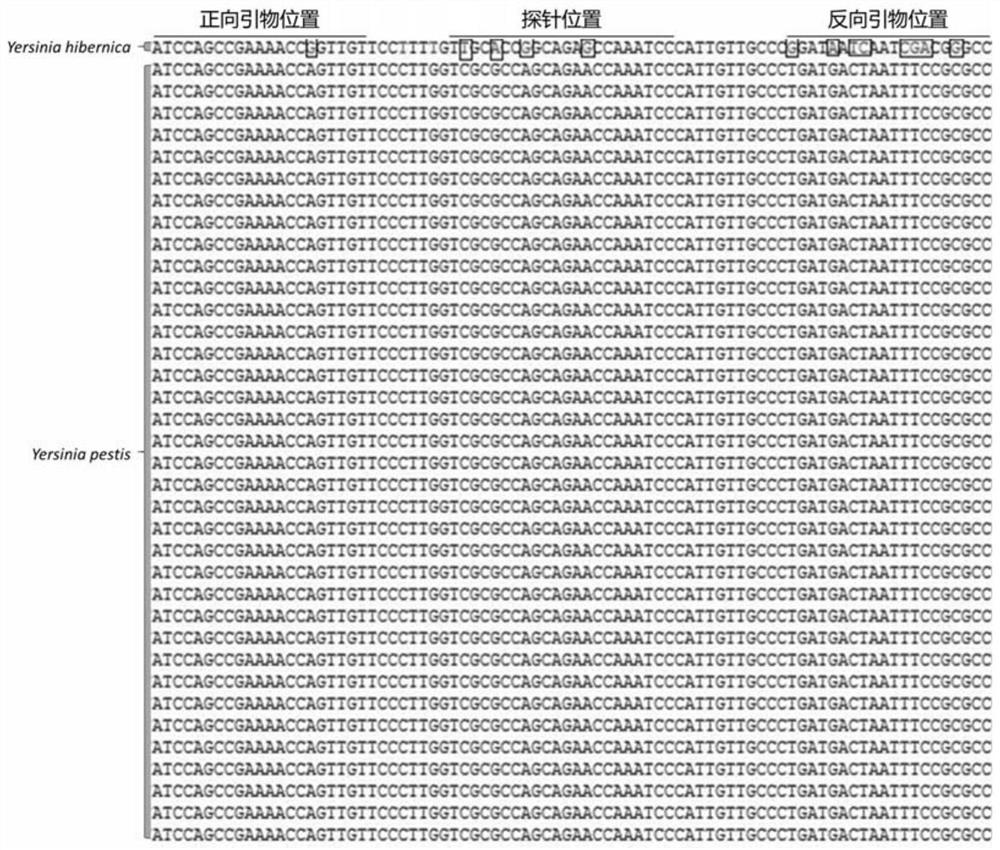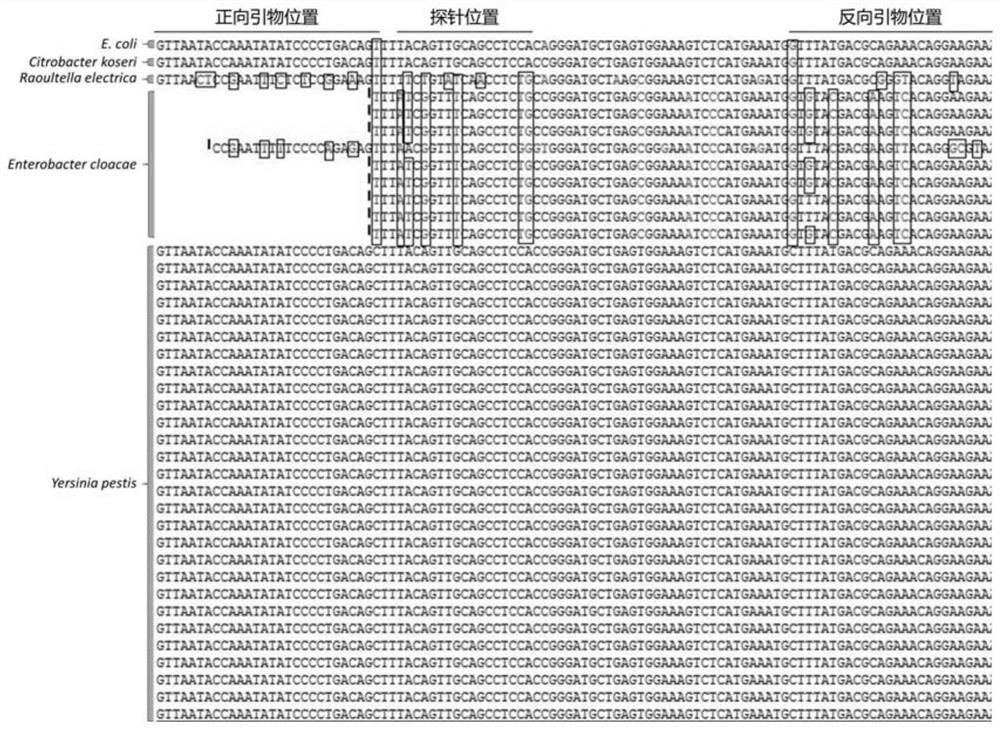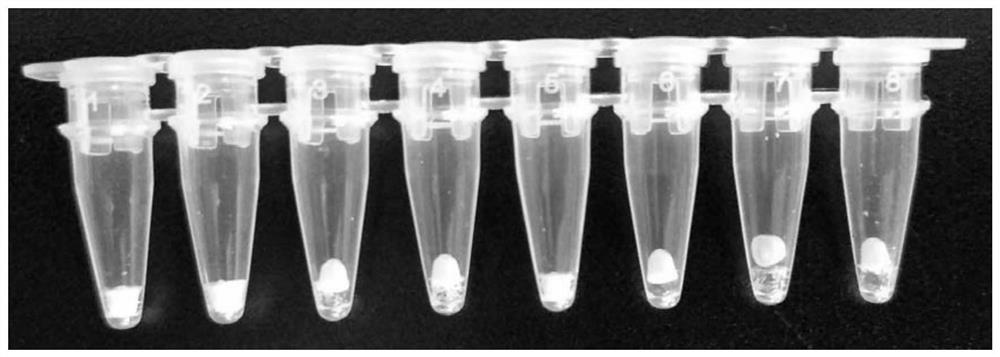Fluorescent PCR reagent and method for detecting yersinia pestis
A Yersinia pestis and fluorescence technology, applied in the field of nucleic acid detection of Yersinia pestis, can solve problems such as missed detection of Yersinia pestis, and achieve the effect of ensuring accuracy, avoiding failure, and good inclusiveness
- Summary
- Abstract
- Description
- Claims
- Application Information
AI Technical Summary
Problems solved by technology
Method used
Image
Examples
Embodiment 1
[0036] Example 1: This example provides a design scheme of fluorescent PCR primers and probes for detecting Yersinia pestis nucleic acid.
[0037] The present invention selects by document research and GenBank nucleic acid database analysis figure 1 The dam gene nucleic acid sequence shown and figure 2The nucleic acid sequence of the pla gene shown is also used as the detection target sequence of Yersinia pestis. The pPCP1 plasmid where the pla gene is located has a high copy number in Yersinia pestis cells, so it has high detection sensitivity for most Yersinia pestis strains; considering that some Yersinia pestis strains do not contain pPCP1 plasmids, At the same time, using the dam gene on the chromosome as the detection target can prevent missed detection due to missing plasmids.
[0038] Use the software Primer Express V3.0 to design the following primers for amplifying the target sequence and the probe sequences for detecting the target sequence:
[0039] The sequen...
Embodiment 2
[0043] Example 2: This example demonstrates the preparation of fluorescent PCR reagents for Yersinia pestis.
[0044] Yersinia pestis fluorescent PCR reagent provided by the present invention is designed and prepared by 25 μ l reaction volume, and the components are shown in Table 1, and each component (potassium chloride, magnesium chloride, dNTPs, Taq DNA polymerase, primer and probe) is carried out gradient dosage Optimize, finally determine the dosage shown in Table 1, and then prepare 2x (ie 12.5 μl) fluorescent PCR liquid detection reagent for Yersinia pestis according to the ingredients and content described in Table 1.
[0045] On the basis of liquid reagents, add freeze-dried excipients (Table 1), divide them into PCR eight-tube tubes according to the amount of one reaction per tube, and then freeze-dry to obtain the freeze-dried fluorescent PCR of Yersinia pestis. The detection reagent is a white particle ( image 3 ). Add 23 μl of nuclease-free water to a portion ...
Embodiment 3
[0046] Example 3: This example demonstrates the detection effect of Yersinia pestis nucleic acid dam gene and pla gene positive reference products using the Yersinia pestis freeze-dried fluorescent PCR detection reagent of the present invention.
[0047] After mixing equal amounts of Yersinia pestis dam gene and pla gene positive reference materials, carry out 10-fold serial dilution, take 23 μl of each concentration and add to 1 part of Yersinia pestis lyophilized fluorescent PCR detection prepared according to Example 2 reagent; 23 μl of nuclease-free water was used as a negative control. The resulting 25 μl reaction mixture was dissolved by slow shaking, centrifuged, and detected on a fluorescent PCR instrument. The reaction program was set according to Table 2. Each treatment was repeated 3 times.
PUM
 Login to View More
Login to View More Abstract
Description
Claims
Application Information
 Login to View More
Login to View More - Generate Ideas
- Intellectual Property
- Life Sciences
- Materials
- Tech Scout
- Unparalleled Data Quality
- Higher Quality Content
- 60% Fewer Hallucinations
Browse by: Latest US Patents, China's latest patents, Technical Efficacy Thesaurus, Application Domain, Technology Topic, Popular Technical Reports.
© 2025 PatSnap. All rights reserved.Legal|Privacy policy|Modern Slavery Act Transparency Statement|Sitemap|About US| Contact US: help@patsnap.com



